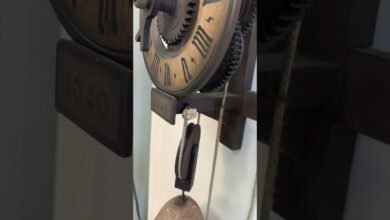Cracked Grout Fixing Kit in Minutes With the Right

Introduction
Cracked, stained, or crumbling grout can make even the most beautiful tile work look worn and neglected. Whether you’re dealing with bathroom tiles that have seen better days or kitchen backsplash grout that’s started to deteriorate, the good news is that you don’t need to call in expensive contractors to solve the problem.
A quality grout fixing kit can restore your tiles to their former glory in just a few hours. These affordable DIY solutions contain everything you need to repair minor to moderate grout damage, saving you hundreds of dollars in professional repair costs.
This guide will walk you through everything you need to know about grout fixing kits, from understanding what’s included to mastering the repair process. By the end, you’ll have the confidence to tackle your grout problems head-on and maintain your tile surfaces for years to come.
What’s Inside a Grout Fixing Kit?
Most comprehensive grout fixing kits include several essential components designed to handle different types of grout repair. Understanding what each tool does will help you choose the right kit and use it effectively.
Grout Removal Tools
The foundation of any good repair starts with removing damaged grout. Most kits include a grout rake or scraper—a small handheld tool with a sharp edge designed to scrape out loose, cracked, or discolored grout. Some premium kits may include multiple removal tools for different grout line widths.
Pre-Mixed Grout or Powder
The heart of your repair kit is the grout itself. Kits typically contain either pre-mixed grout that’s ready to apply or powder that you mix with water. Pre-mixed options offer convenience, while powder versions often provide better color matching and longer shelf life.
Application Tools
Look for kits that include grout floats, spatulas, or applicator tubes. These tools help you apply new grout evenly and push it deep into the joints for a strong repair.
Cleaning Supplies
Quality kits include sponges, cloths, or specialized cleaning pads for removing excess grout and achieving a smooth finish. Some also include grout haze removers for the final cleanup.
Sealer
Many comprehensive kits include grout sealer, which provides crucial protection against moisture, stains, and future damage.
Step-by-Step Guide to Using Your Grout Fixing Kit
Follow this systematic approach to achieve professional-looking results with your grout fixing kit.
Step 1: Prepare the Area
Start by thoroughly cleaning the tile surface and grout lines with a mild detergent. Remove any soap scum, mildew, or debris that could interfere with the repair. Allow the area to dry completely before proceeding.
Step 2: Remove Damaged Grout
Using the removal tool from your kit, carefully scrape out loose, cracked, or discolored grout. Work slowly to avoid damaging the surrounding tiles. Remove grout to a depth of at least two-thirds of the tile thickness for the best bond.
Clean out all debris and dust from the grout lines using a vacuum or brush. Any remaining particles can weaken your repair.
Step 3: Mix and Apply New Grout
If using powder grout, follow the manufacturer’s mixing instructions precisely. Add water gradually until you achieve a thick, peanut butter-like consistency.
Apply the grout using diagonal strokes, pressing firmly to ensure it fills the entire joint. Work in small sections to prevent the grout from drying before you can clean excess material.
Step 4: Clean Excess Grout
After applying grout to a manageable area, use a damp sponge to remove excess material from the tile surface. Rinse the sponge frequently and use light, diagonal strokes to avoid pulling grout from the joints.
Step 5: Final Cleanup and Sealing
Once the grout has cured according to the manufacturer’s instructions (typically 24-48 hours), apply sealer if included in your kit. This final step protects your repair and helps prevent future damage.
Essential Tips for Long-Lasting Grout Maintenance
Proper maintenance extends the life of your grout repair and prevents future problems.
Regular Cleaning Routine
Clean grout lines weekly with a pH-neutral cleaner specifically designed for grout. Avoid harsh chemicals or abrasive cleaners that can break down the grout over time.
Address Problems Early
Small cracks or stains are much easier to fix than extensive damage. Inspect your grout regularly and touch up minor issues before they become major repairs.
Maintain Proper Ventilation
Excess moisture is grout’s biggest enemy. Use exhaust fans in bathrooms and ensure good air circulation to prevent mold and deterioration.
Reapply Sealer Annually
Even the best grout repair won’t last without proper sealing. Plan to reapply grout sealer once a year in high-moisture areas like showers and bathroom floors.
Top Grout Fixing Kits Worth Considering
When shopping for a grout fixing kit, consider these factors to find the best option for your needs.
For Small Repairs: Pen-Style Applicators
These compact kits are perfect for touching up minor cracks or discoloration. They’re easy to use but limited in coverage area.
For Medium Projects: Complete Repair Kits
Look for kits that include multiple tools, various grout colors, and sealer. These provide the best value for moderate repair jobs.
For Large Areas: Professional-Grade Systems
If you’re tackling extensive grout repair, invest in a comprehensive kit with premium tools and materials. The higher upfront cost pays off in durability and finish quality.
Color Matching Considerations
Many manufacturers offer color-matching guides or sample packs. Take advantage of these resources to ensure your repair blends seamlessly with existing grout.
Frequently Asked Questions
How long does grout repair last?
With proper application and maintenance, grout repairs can last 5-10 years or more. The longevity depends on factors like moisture exposure, cleaning routine, and the quality of materials used.
Can I use a grout fixing kit on any type of tile?
Most kits work well with ceramic, porcelain, and stone tiles. However, always check the manufacturer’s recommendations, especially for natural stone, which may require specialized products.
What’s the difference between sanded and unsanded grout in repair kits?
Sanded grout contains fine sand particles and works best for grout lines wider than 1/8 inch. Unsanded grout is smoother and ideal for narrow joints. Many repair kits specify which type they contain.
How do I know if I need professional help instead of a DIY kit?
Consider professional repair if you have extensive damage, structural issues, or if your DIY attempts haven’t held up. Signs include recurring cracks, water damage behind tiles, or loose tiles.
Can grout fixing kits handle different grout colors?
Many kits offer multiple color options or can be tinted to match existing grout. For exact color matching, consider purchasing a small amount first to test the match.
Transform Your Tiles With Confidence
Grout fixing kits offer an accessible, cost-effective solution for restoring your tile surfaces. With the right tools, techniques, and maintenance routine, you can achieve professional-looking results that last for years.
Remember that successful grout repair is as much about preparation and patience as it is about having the right materials. Take your time with each step, don’t rush the curing process, and invest in quality products for the best results.
Start with a small, less visible area to practice your technique before tackling prominent surfaces. Once you’ve mastered the process, you’ll have the skills and confidence to maintain beautiful, long-lasting grout throughout your home.



